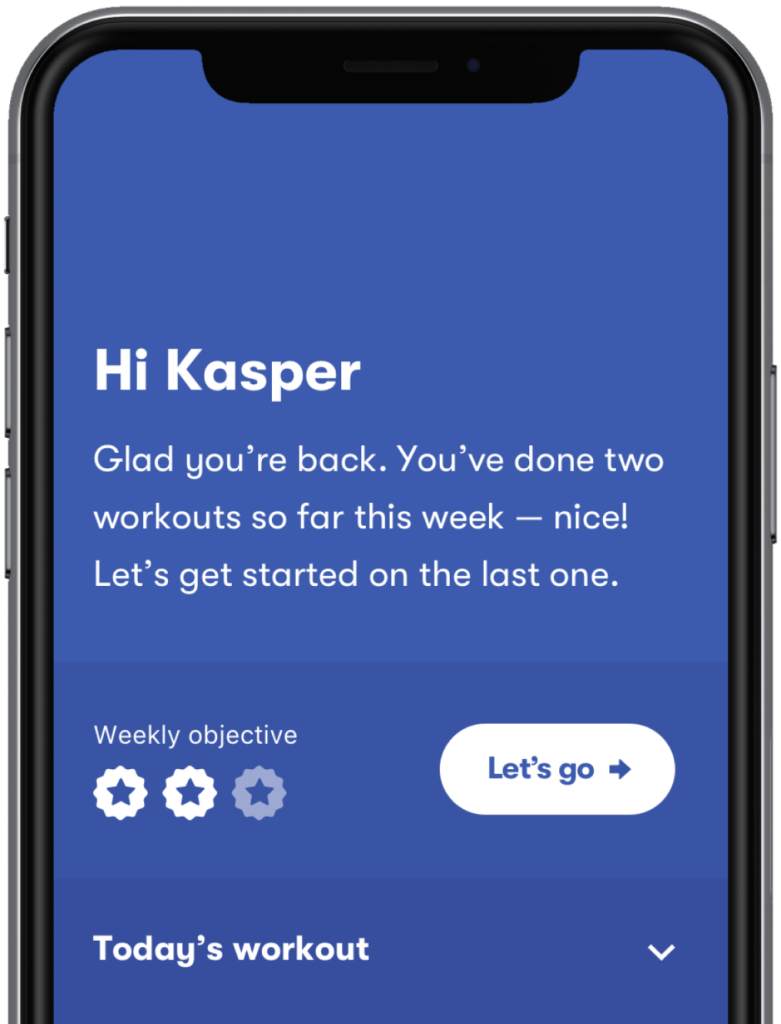Content:
Symptoms
Common causes of lower back spasms
Treatment and remedies
Other treatments for lower back spasms
Preventing lower back spasms in the future
Diagnosis
When to see a doctor
Take care of your back with regular exercise
Lower back pain is a very common health problem worldwide. It affects your productivity at work as well as your general well-being. According to the World Health Organization, up to 70 percent of adults suffer from lower back pain at some point in their lifetime.1 Lower back spasms are a common and well-known cause of back pain. What are lower back spasms? What causes them? And what can you do for relief if you’re experiencing a lower back spasm?
In this informative guide, we explore the common causes and symptoms of lower back spasms. We delve into what you can do to prevent spasms in your lower back. We also present an overview of effective treatments, including stretches for lower back spasms. The Injurymap app shows you a range of exercises to relieve spasms in your lower back. The exercises can be done at home. The app demonstrates the correct way to do each exercise.
Please remember, this guide has been written for your information only. Do not use it as a replacement for professional medical care. Always consult a doctor if your lower back spasms are severe or do not improve with home exercises.
Looking for a solution to lower back spasms? Try the Injurymap exercise app now.
Diagnosis
To make a diagnosis of lower back spasms, your doctor will ask you about the severity of your symptoms and how often they occur. The doctor will also question you about what makes your spasms worse and what relieves your back pain. Be sure to tell your healthcare provider if your lower back spasms started after a specific activity, such as moving furniture or playing a sport. This can help your physician determine what is causing your lower back spasms.4
Your doctor may order imaging studies, such as an X-ray, CT scan, or MRI to get a better look at your lower back. These scans will help your physician identify any serious problems with your spinal discs or blood supply to the area.4
When to see a doctor
In most cases, exercises and home remedies help with your lower back spasms. However, if your muscle spasms and back pain are severe and do not improve with conservative treatment at home, you should get medical care.
You should see a doctor if:7
- Your lower back spasms are severe and last more than a few days.
- Your back spasms prevent you from completing your normal daily activities.
- You have suffered injury or trauma to your back.
- You have fever associated with back pain and spasms.
- You have a loss of bladder or bowel control.
- You are experiencing weakness or loss of strength in the back muscles.
- You have unexplained weight loss in association with back pain and spasms.
Take care of your back with regular exercise
Painful lower back spasms can make it difficult for you to work and relax. If you keep pushing through the pain, you are putting yourself at risk of further injury and delaying recovery. Rather, you should give your lower back a short period of rest. Pay attention to the activities that worsen your symptoms and avoid them for some time. But remember, long periods of inactivity can lead to stiff muscles and lower back spasms.
It’s important to start a gentle stretching program to loosen up your tight lower back muscles. Stretching exercises promote blood flow to the area, which helps speed up the healing process. Once your symptoms are under control, you can start performing strengthening exercises for your lower back. Doing these exercises regularly will improve flexibility, mobility, and stability in your lower back. The exercises will strengthen your back muscles. A whole-body exercise program can help you lose weight. These are all important contributing factors to lower back spasms.
Your lower back spasms are your body’s way of telling you that you need to take better care of your back. Luckily, exercises can relieve most of the symptoms caused by tight, contracting lower back muscles. The Injurymap app includes a range of exercises for stretching and strengthening your lower back. You can do these exercises in the comfort of your home with little to no equipment. The app shows you the correct form and technique for each exercise, so it’s easy to follow along. Use the Injurymap app to treat your lower back spasms and prevent them from returning in the future.
Start your 14-day free trial of the Injurymap app today!



